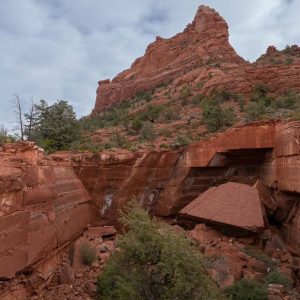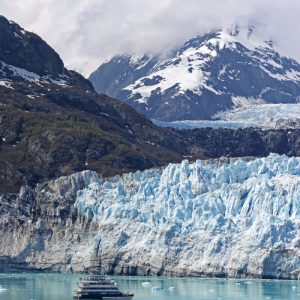![]()
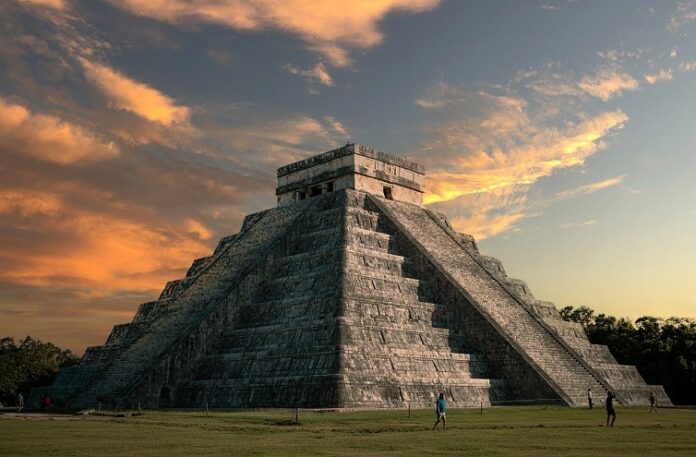
I wanna run on the sacred dunes/Through the ancient ruins–Lord Huron (2012)
You won’t find world-famous Machu Picchu in North America. Still, the continent includes an exceptional array of other ancient ruins. Be it olden Viking settlements in Canada or Mayan ruins in Mexico, there is much to see here too. So join us now, then, as we explore some of the awesome ancient ruins of North America.
Contents
- 2. Montezuma Castle National Monument, USA
- 3. Kinishba Ruins, USA
- 4. Wupatki National Monument, USA
- 5. Mesa Verde National Park, USA
- 6. Lapakahi State Historical Park, USA
- 7. Taos Pueblo, USA
- 8. Bandelier National Monument, USA
- 9. Chaco Culture National Historical Park, USA
- 10. The River House Ruins, USA
- 11. The Bighorn Medicine Wheel, USA
- 12. L’Anse aux Meadows, Canada
- 13. Tulum, Mexico
- 14. Chichen Itza, Mexico
- 15. Yaxchilan, Mexico
- 16. Edzna, Mexico
- 17. Palenque, Mexico
- 18. Monte Alban, Mexico
- 19. Teotihuacan, Mexico
- 20. El Rey, Mexico
- 21. Chacchoben, Mexico
- 22. Calakmul, Mexico
- 23. Ek’ Balam, Mexico
- 24. Uxmal, Mexico
- 25. Dzibanche, Mexico
- 26. Xunantunich, Belize
- 27. Caracol, Belize
- 28. Lamanai, Belize
- 29. Tazumal, El Salvador
- 30. Tikal, Guatemala
- 31. Copan, Honduras
Awesome Ancient Ruins of North America
2. Montezuma Castle National Monument, USA
 100vw, 696px” data-lazy-src=”https://acovalue.info/wp-content/uploads/2023/10/1-1-696×461-1.jpg” /><img decoding=)
Ensconced between Flagstaff and Phoenix in Camp Verde, Arizona, this less-famous place features one of North America’s preserved ancient cliff dwellings. Its namesake building stands five stories tall and is actually carved into a limestone cliff. It has approximately 60 rooms that were probably built over a period of many years, starting about 1,100 AD.
3. Kinishba Ruins, USA
 100vw, 696px” data-lazy-src=”https://acovalue.info/wp-content/uploads/2023/10/2-696×215-1.jpg” /><img decoding=)
These ancient ruins are situated in the Fort Apache Indian Reservation in Arizona and cared for by the White Mountain Apache Tribe. The impressive Native American site has 600 rooms and is 5,000 feet high. This was probably a mansion or “great house” somewhere between the 1100s and the 1300s.
4. Wupatki National Monument, USA
 100vw, 696px” data-lazy-src=”https://acovalue.info/wp-content/uploads/2023/10/3-696×458-1.jpg” /><img decoding=)
Roughly 30 miles north of Flagstaff, Arizona, in the desert there are high rock outcroppings. Here the rich red hues create a stunning landscape highlighted by five ancient Pueblo structures. This historical site was reportedly first inhabited sometime around 500 AD. The word “Wupatki” is actually Hopi for “tall house.” The Wupatki Ruin has 100 rooms and a ballcourt as well.
5. Mesa Verde National Park, USA
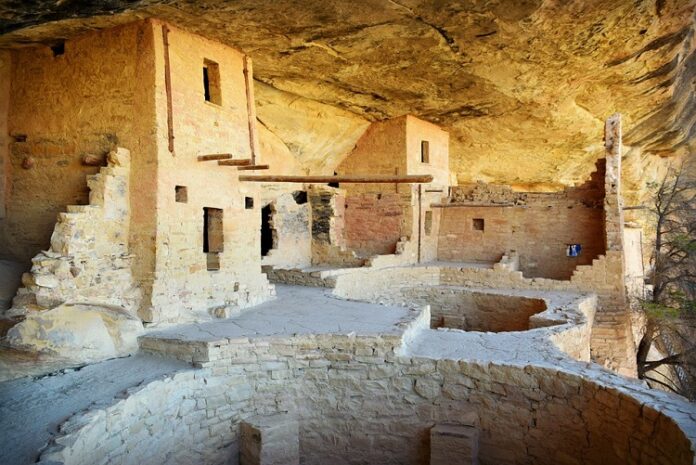
Colorado’s Mesa Verde National Park is said to be one of the country’s “best-preserved native Ancestral Puebloan sites.” It was first settled approximately 7500 BC. Here you will discover over 5,000 separate sites and 600 cliff dwellings.
Mesa Verde is arguably most well-known for Cliff Palace. It is one of North America’s largest cliff dwellings. Be sure to see Long House and Balcony House too.
6. Lapakahi State Historical Park, USA
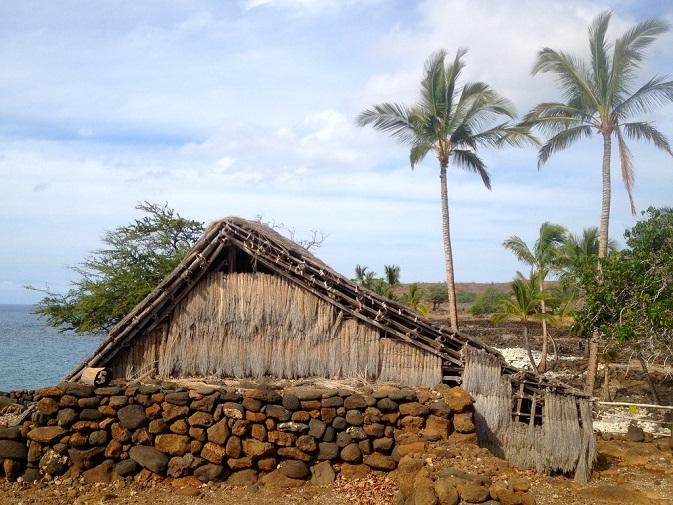
Travel to the edge of Hawaii’s Big Island. Here on these remote beaches, you will discover more than the waves lapping the shore. Here you will find a mix of thatched huts and the random ruins of an ancient fishing village amidst a 262-acre coastal historical park. This partially restored village is over 600 years old.
7. Taos Pueblo, USA
 100vw, 676px” data-lazy-src=”https://acovalue.info/wp-content/uploads/2023/10/6-2.jpg” /><img decoding=)
Take in the view of this ancient adobe structure backdropped by the towering Taos Mountains here in the state of New Mexico. It is situated only a mile out of Taos and is an official UNESCO World Heritage Site to boot. Considered one of the country’s “oldest continuously inhabited communities”, it is more than 1,000 years old.
8. Bandelier National Monument, USA
 100vw, 673px” data-lazy-src=”https://acovalue.info/wp-content/uploads/2023/10/7.jpg” /><img decoding=)
9. Chaco Culture National Historical Park, USA
 100vw, 696px” data-lazy-src=”https://acovalue.info/wp-content/uploads/2023/10/8-wiki-696×464-1.jpg” /><img decoding=)
This UNESCO World Heritage Site is located in New Mexico. Arguably less famous than Mesa Verde, this is one of the nation’s most significant Ancestral Puebloan sites. Experts say it was once a major cultural center between 849 AD and 1251 AD. Be sure to explore the complexes known as Casa Chiquita, Pueblo Pintado, and Pueblo Bonito.
10. The River House Ruins, USA
 100vw, 691px” data-lazy-src=”https://acovalue.info/wp-content/uploads/2023/10/9-pinterest.jpg” /><img decoding=)
You need to travel deep inside the alcoves and caves of the lesser-known Bears Ears National Monument located in southeastern Utah to see these ancient ruins. This old Pueblo home was actually hand-carved into the rough-hewn red rock of the landscape. The site features ancient pictographs and petroglyphs and is thought to have been inhabited from about 900 to the 1290s.
11. The Bighorn Medicine Wheel, USA
 100vw, 696px” data-lazy-src=”https://acovalue.info/wp-content/uploads/2023/10/10-pinterest-696×453-1.jpg” /><img decoding=)
Located close to the border of Montana and northern Wyoming, this odd, remote site is sure something people simply don’t see every day in the US. Specifically situated in Bighorn National Forest near Medicine Mountain’s summit, this mysterious limestone wheel has a diameter of 80 feet. It has seven stone circles and 28 spokes and is between 300 to 800 years old.
12. L’Anse aux Meadows, Canada
 100vw, 696px” data-lazy-src=”https://acovalue.info/wp-content/uploads/2023/10/11-flickr-696×466-1.jpg” /><img decoding=)
The UNESCO World Heritage Site L’Anse aux Meadows overlooks the great Gulf of St. Lawrence on the island of Newfoundland. Those in the know state this is North America’s sole officially confirmed Viking or Norse site. It is reported to have been founded about 1000 A.D. Here in a grass meadow, you can see the ruins of eight homes and workshops.
13. Tulum, Mexico
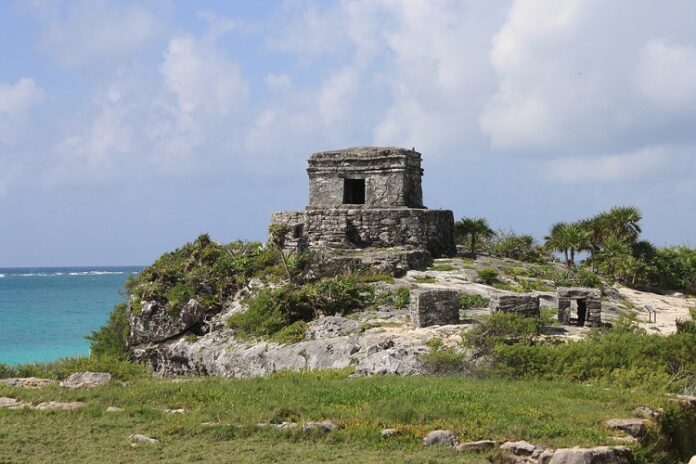
This Mayan walled city dates back to the 1200s. It is a breathtaking, beautiful seaside spot just off the coast of the Yucatan Peninsula roughly two hours out of Cancun. Experts confirm this is one of the Mayan civilization’s best-preserved sites. When you visit Tulum’s archeological zone, the most important structures to visit are the Temple of the Frescoes, and El Castillo.
14. Chichen Itza, Mexico
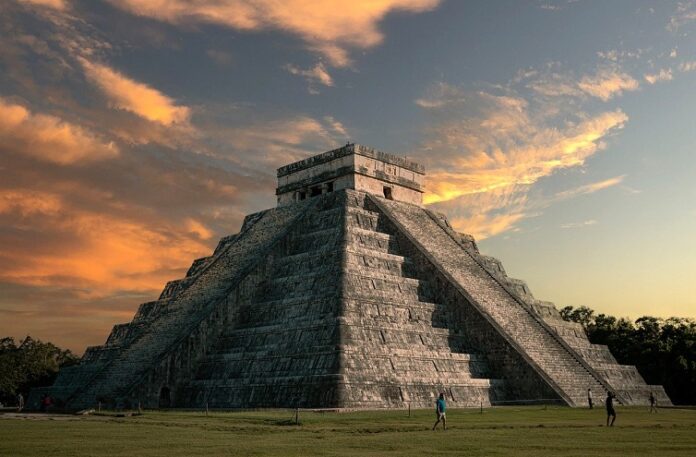
Chichen Itza is one of the most-visited and largest Mayan cities on the continent. Nestled in the Yucatan amidst a verdant tropical forest, it harkens back to 600 A.D. Perhaps the most popular place here is the towering Temple of Kukulcan which truly dominates the place. Be sure to see the great Group of a Thousand Columns and the popular Great Ball Court.
15. Yaxchilan, Mexico
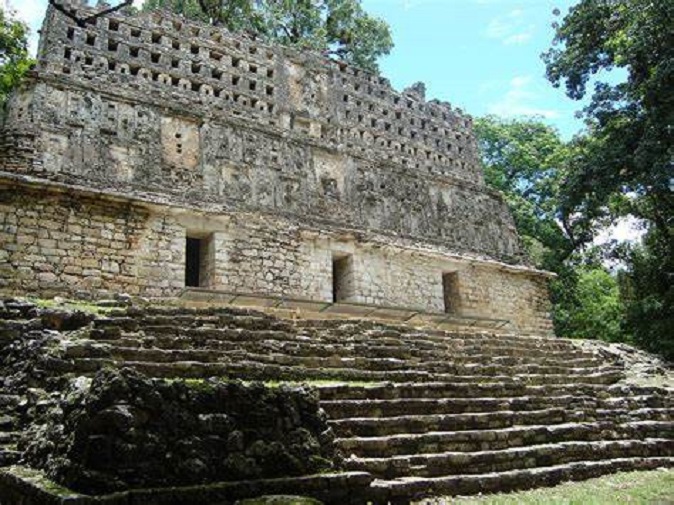
Found in the state of Chiapas along the Usumacinta River, this special Mayan metropolis is referred to by some as “an archeological Shangri-La.” It is highlighted by ancient temples, palaces, stairways, and interesting stone blocks that display a variety of hieroglyphic etchings. This ancient city was built sometime in 350 AD. Be sure to venture into the mysterious Labyrinth where you will see a number of distinctive sculptures.
16. Edzna, Mexico
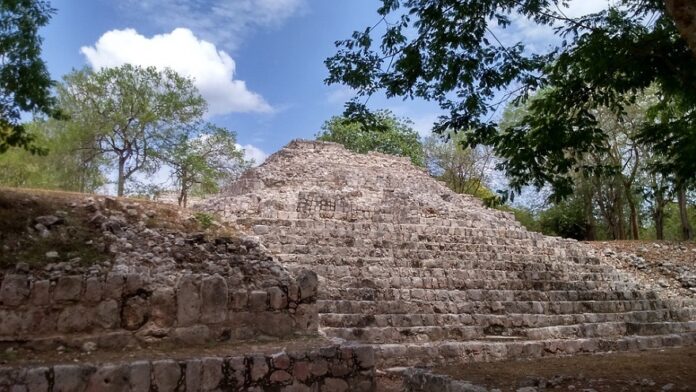
Edzna is another one of Mexico’s less-famous Mayan cities. It is situated roughly one hour out of the city of Campeche in the Yucatan Peninsula. It was reportedly most active between 400 AD and 1000 AD. This ancient place was once the home of approximately 25,000 citizens. Hike through the property and see the main temple and the ball court.
17. Palenque, Mexico
 100vw, 673px” data-lazy-src=”https://acovalue.info/wp-content/uploads/2023/10/16.jpg” /><img decoding=)
Deep in the lush jungle of the state of Chiapas, you will discover this medium-sized Mayan metropolis. It’s home to some critically-acclaimed architecture and carving and sculpting from the Mayan civilization. These ancient ruins were erected between roughly 200 B.C. to 800 A.D. Veteran visitors say the must-see attractions here are the popular Palace and the noteworthy Temple of the Inscriptions.
18. Monte Alban, Mexico

Founded circa 500 BC, the city of Monte Alban was reportedly the very “center of the Zapotec civilization” for almost a century. Located on a plateau overlooking the massive mountains about six miles out of the city of Oaxaca, this esteemed UNESCO World Heritage Site is one of Mesoamerica’s oldest cities. Visit the Main Plaza and see the assortment of well-preserved stone monuments.
19. Teotihuacan, Mexico

This UNESCO World Heritage Site is both the most significant and the largest pre-Columbian city in the country. Located 25 miles out of Mexico City, it was built around 100 BC and grew to be the home of more than 125,000 people. It includes residential complexes and many murals. The main attractions here are the Avenue of the Dead and the Pyramid of the Moon.
20. El Rey, Mexico
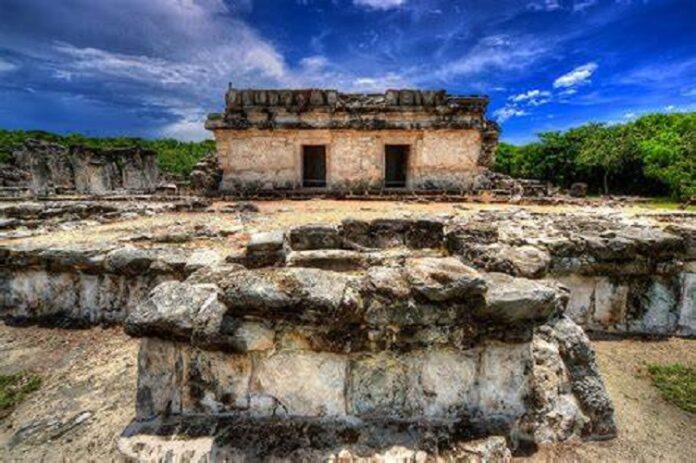
Unlike many remote ancient ruins, this particular Mayan site is actually in the hotel zone of the tourist district just outside of the popular, bustling city of Cancun. It is over 1,000 years old. Close to the Caribbean Sea, these ancient ruins include almost four dozen structures and feature ancient burial sites and murals.
21. Chacchoben, Mexico
 100vw, 696px” data-lazy-src=”https://acovalue.info/wp-content/uploads/2023/10/20-flickr-696×463-1.jpg” /><img decoding=)
In the language of the Mayans, this is known as “the place of red corn.” It can be found less than 100 miles out of Tulum in the state of Quintana Roo. The ruins of this relatively small site harken back to 700 AD. Stroll the walking path into the surrounding jungle but first check out all the pyramids, staircases, and walls here.
22. Calakmul, Mexico
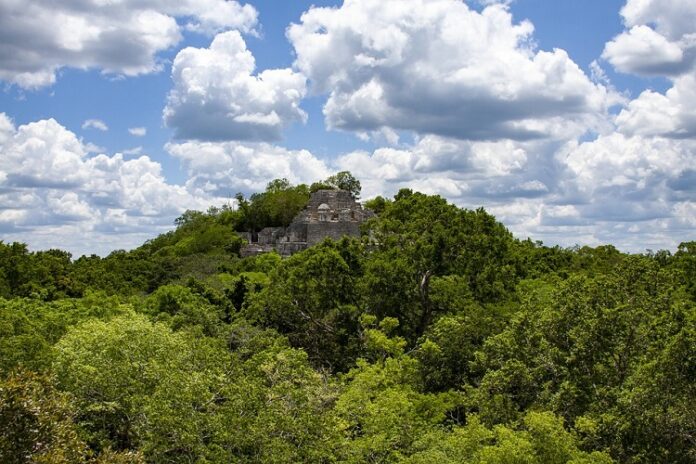
Travel deep into the heart of the Mexican jungle in the state of Campeche. It is here, less than 22 miles from the border of Guatemala, you will find a rich, expansive, eight-square-mile archeological site known as Calakmul. Explore the 6,750 structures that include monuments, pyramids, and tombs. Don’t miss the impressive pyramid, Structure 2, too. This city dates back to about 500 BC.
23. Ek’ Balam, Mexico

The archeological site of Ek’ Balam is roughly two hours out of Cancun in the state of Yucatan. It was once the home of a well-known Mayan kingdom. It includes 45 different structures and was populated between 769 and 841 AD. Be sure to see the Acropolis, the Oval Palace, the Steam Bath, and the Tomb of Ukit Kan Lek Tok.
24. Uxmal, Mexico
 100vw, 696px” data-lazy-src=”https://acovalue.info/wp-content/uploads/2023/10/23-696×434-1.jpg” /><img decoding=)
Some sources report that Uxmal is one of the most beautiful and most important sites in Mayan culture. This ancient city in Yucatan is a popular tourist destination and a UNESCO World Heritage Site. It was founded in 500 AD. Some of the buildings are still joined by ancient roads. The top attractions are the expansive Governor’s Palace and the five-story Pyramid of the Magician.
25. Dzibanche, Mexico
 100vw, 674px” data-lazy-src=”https://acovalue.info/wp-content/uploads/2023/10/24-wiki.jpg” /><img decoding=)
This secluded site is nestled amidst swampland in Quintana Roo. It was reportedly a major Mayan metropolis and, in 500 AD, was even made a dynastic capital. It includes an assortment of intriguing and attractive temples such as the Temple of the Captives, the Temple of the Lintels, and the Temple of the Owl.
26. Xunantunich, Belize

Xunantunich is an ancient Mayan ceremonial site found under a mile from the border of Guatemala. Dating back to 800 AD, it includes 26 temples, burial chambers, and palaces over an area of nearly one square mile. The most popular structure here is the El Castillo. It is 130 feet high and is one of Belize’s tallest ancient structures.
27. Caracol, Belize
 100vw, 673px” data-lazy-src=”https://acovalue.info/wp-content/uploads/2023/10/26-flickr.jpg” /><img decoding=)
This massive metropolis is located deep in the foothills of the majestic Maya Mountains. Once a significant political center, it was also the largest Mayan city. Much of what remains, dates back to 400 AD. There are 267 buildings per square kilometer spanning an area of 200 square kilometers or 77 square miles). Check out the monuments, the ball court, and residential complexes.
28. Lamanai, Belize
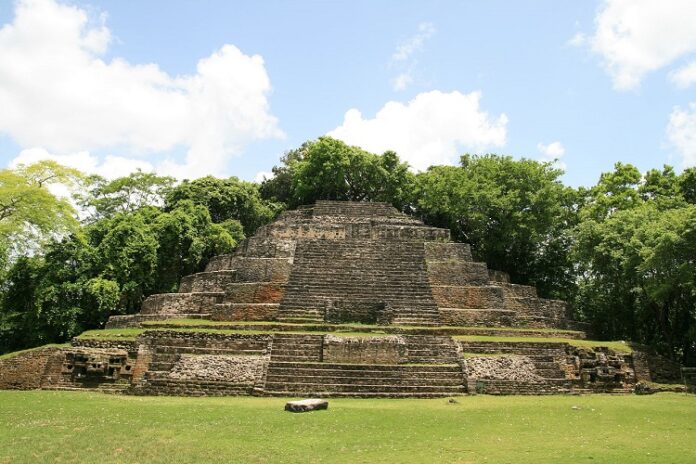
Located in the northern part of the country, this ancient Mayan city was occupied and active from roughly 1500 BC through 900 AD. Oddly enough, the name means “submerged crocodile” in English. It is most famous for such buildings as the Jaguar Temple, the Mask Temple, and an exceptional assortment of copper artifacts as well.
29. Tazumal, El Salvador

Visit this memorable Mayan site in the town of Chalchuapa. Here archaeologists have uncovered metal artifacts dating back to 700 AD. They also found gorgeous gold ornaments that are displayed in the museum there. You should see the popular Temple of the Columns, the numerous sculptures, and the burial sites as well.
30. Tikal, Guatemala
 100vw, 696px” data-lazy-src=”https://acovalue.info/wp-content/uploads/2023/10/29-696×464-1.jpg” /><img decoding=)
This large city is highly significant in terms of Mayan history. Today it is a major part of the Tikal National Park nestled in a rainforest in Guatemala. There are thousands of structures including altars, burial sites, and temples from as far back as 300 AD. Must-see sites include the Great Plaza, the Lost World Pyramid, and, of course, the 154-foot-tall Tikal Temple.
31. Copan, Honduras
 100vw, 696px” data-lazy-src=”https://acovalue.info/wp-content/uploads/2023/10/30-696×400-1.jpg” /><img decoding=)
Last but certainly not least, Copan. This was once an important center of the Mayan civilization. This massive metropolis is found near the border of Guatemala.
It was occupied for over 2,000 years. This UNESCO World Heritage Site was reportedly once the home of as many as 20,000 people at its peak sometime during the 700s. Must-see sites here include the Great Plaza of the Stelae, the Acropolis, and the fascinating Hieroglyphic Stairway.
